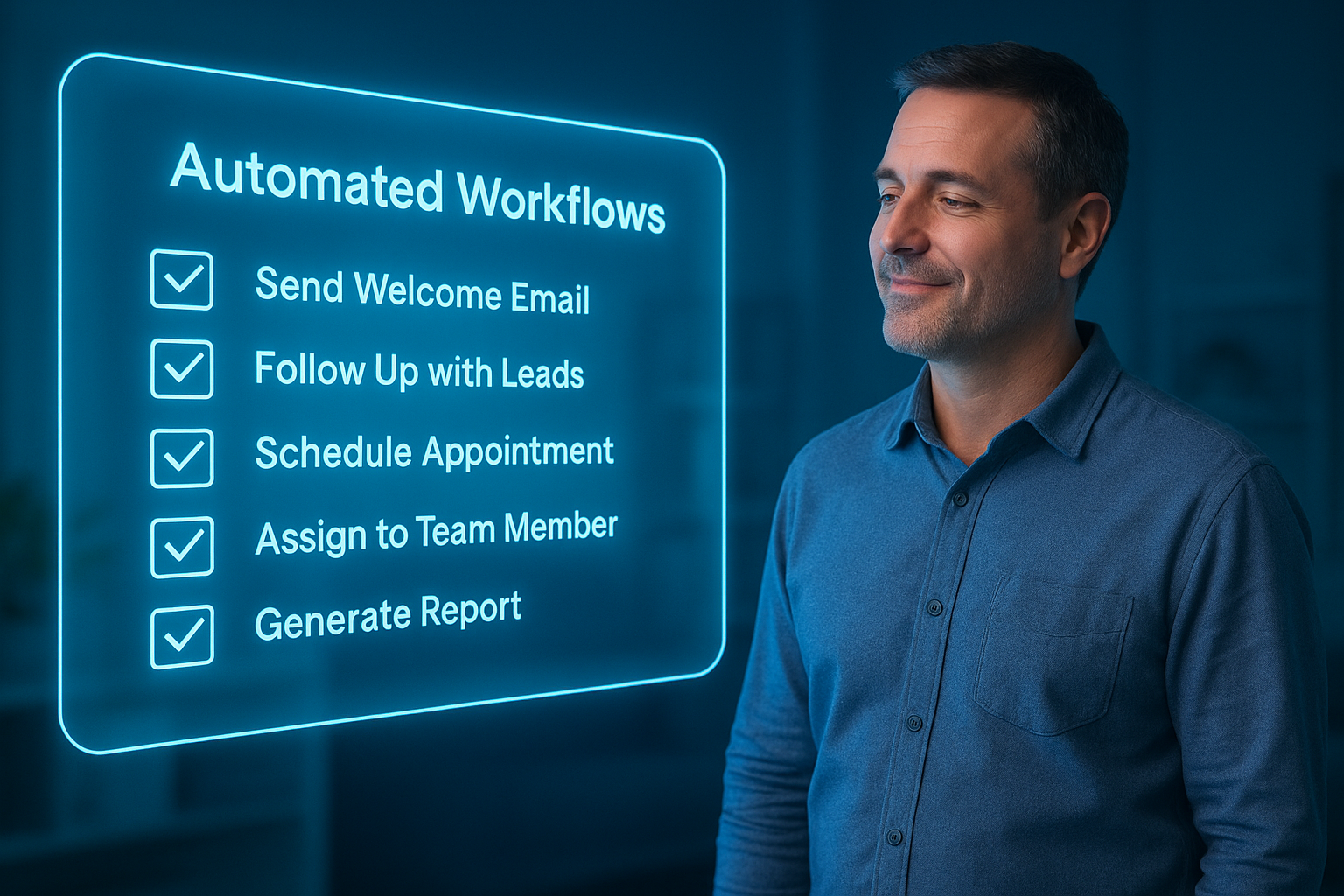Automate Smarter: Avoid These Common Mistakes
Why Most Small Business Automations Fail
(And How to Fix Yours Before They Do)

Automation is supposed to save time. But for many small business owners, it ends up costing time, clarity, and energy.
You’re promised that with the right tools, your business will run while you sleep. But instead, you’re troubleshooting zaps, rebuilding broken workflows, or worse—chasing down leads who never got the follow-up you thought was automated.
The problem? It’s not automation itself. It’s how you’re setting it up.
Automation isn’t magic. It’s strategy multiplied by systems.
Let’s walk through the most common mistakes business owners make with automation—and how to avoid them from the start.
Mistake #1: Automating Without a Strategy
Automation should serve your strategy, not replace it.
Too many business owners start with, “What tool should I use?” instead of, “What process should I simplify?”
This leads to scattered automations that don’t align with the bigger picture. You end up duct-taping tools together instead of creating a seamless flow.
Fix It:
Map your customer journey first. Then identify:
- Where leads fall through the cracks
- Which steps are repetitive but essential
- Where delays or bottlenecks occur
Only then should you begin automating.
Check out How to Prepare Your Business for Effortless Scaling to learn how systems readiness impacts success.
Mistake #2: Overcomplicating the Workflow
If your automation requires a flowchart to explain, it’s too complex.
We’ve seen businesses create 17-step email automations triggered by six different tags and conditions. When it breaks (and it will), no one knows how to fix it.
Fix It:
Start with simple triggers:
- New lead → send intro email
- Missed call → send text
- Appointment booked → assign internal task
Build in layers. Let each automation prove itself before expanding.
Check out 1% Improvements to learn how tiny tweaks can outperform overengineered funnels.
Mistake #3: Relying on Tools Instead of Documentation
The best automations don’t live in your memory—they live in your systems.
If you’re the only person who knows how the automations work, you’re still the bottleneck. And if you ever need to pause, pivot, or troubleshoot, you’ll wish you had documentation.
Fix It:
- Document what each automation does and why
- Include screenshots of the setup
- Use a simple SOP in Notion or ClickUp to explain the logic
Your future self (and your team) will thank you.
Mistake #4: Automating the Wrong Things First
Many businesses automate the flashy parts (email campaigns, pop-ups) but skip the foundational systems—like lead routing, pipeline tagging, or client onboarding.
The result? A slick funnel that falls apart after the first click.
Fix It:
Start with:
- Lead capture and follow-up
- Internal task triggers
- Client onboarding workflows
These are the “invisible” automations that prevent chaos—and drive results.
Mistake #5: Setting It and Forgetting It
Automation isn’t a one-and-done setup. Things break. Tools update. Offers change.
When you “set it and forget it,” you lose visibility. And when it breaks, you lose trust.
Fix It:
- Schedule monthly audits of your workflows
- Use test leads to run through your funnel
- Track key automation KPIs (response time, open rates, completion triggers)
This keeps your systems sharp—and your customer experience consistent.
Real-World Example: How DesignJoy Built a Productized Business with Automation
DesignJoy, a one-person design subscription business founded by Brett Williams, scaled to over $1M/year in revenue by relying heavily on automation. Instead of chasing leads manually, Brett built a productized offer, automated client onboarding with Stripe + Webflow + Zapier, and used Notion to manage project intake.
He didn’t start with fancy tools. He started by automating the essential: how clients submit work, how those requests are tracked, and how updates are delivered.
His success shows that automation isn’t about size. It’s about structure.
Final Takeaway
You don’t need more tools—you need smarter workflows.
The best automations aren’t complicated. They’re consistent, clear, and aligned with your strategy.
Automate the right things. Keep it simple. And build systems that work when you don’t.
Next Steps
Overwhelmed by tech tools or unsure where to start? Schedule a strategy and audit call and we’ll help you streamline your automations, eliminate chaos, and build systems that scale.
More Marketing Tips, Tricks & Tools










